Different types of Cycles
Key difference: Cycles were supposed to be the basic means of transport from earlier times. Today, these can be categorized according to their functions and components like, number of riders, gearing support, means of propulsion and etc. Hence, there are different types of cycles available in markets which are used for several purposes.
Cycles and their types are used for specified purposes; accordingly there are several bikes available in the markets. Given below is the list of cycles which broadly distinguishes every cycle from the other with some highlighting points. There are many different kinds of bicycles available, which are known for their specific purposes. Various types of cycling and biking require different types of cycles; hence accordingly these are modeled and structured to meet the need of their purposes. Ultimately, the type of riding dictates the type of bicycle; hence these are categorized according to:
- Function
- Sport
- Frame Design
- Material
- Rider Position
The most common known and available types of cycles in the market are listed below. Comparison between different types of cycles:
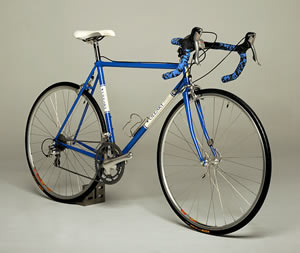 Road Bikes or Bicycles:
Road Bikes or Bicycles:
These are designed in order to ride fast on the smooth pavement paths or roads. These have smooth, skinny tires and "drop" handlebars, which can be used for on-road racing. These are lighter in weights, and hence can be ridden faster on paved roads; hence are not fit for riding along the unpaved or unstable roads. Also, these bikes are not able to carry heavy loads.
Road bikes are further categorized as:
- Cyclocross Bicycles: Cyclocross bicycles are also called as 'Cross bikes or CX bikes for short. These are especially designed for mixed types of surfaces, which can be a combination of both paved and unpaved trails with gravels and grasses.
- Touring Bicycles: These are special type of road-bikes which are designed for the paved roads. These have a good durability and self support mechanisms for the longer distance riding.
- Triathlon/Time Trial Bicycles: These are special types of road bikes with aerodynamic properties and mechanisms. Usually, there cycles are not allowed for use in the mass start races.
- Flat-Bar Road Bicycles: These are light, high-performance bikes; with wider tires. They usually have the ability to mount cargo racks and fenders, which make them good commuter bikes.
- Track/Fixed-Gear Bicycles: Also, called as fixies, which are designed to be ridden on a velodrome, the banked oval track specifically for bicycle racing.
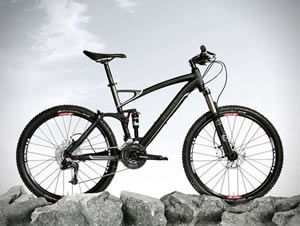 Mountain Bikes or Bicycles:
Mountain Bikes or Bicycles:
These are especially structured and designed for off-road trails or non pavement paths. These have flat or upright handlebars, and a very low gear range for pedaling up steep trails. Mostly, some types of mountain bikes have shock absorbers or suspension. The ones with front suspensions are called as ‘hardtails’; while, the ones with both front and rear suspensions are called as ‘full-suspension’ bikes or ‘duallies’. Also, mountain bikes with no suspensions are called as ‘rigid’. Mountain bikes can be used as touring or commuting bikes.
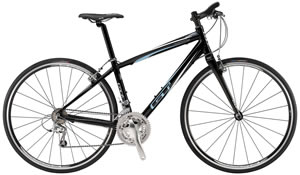 Hybrid Bikes:
Hybrid Bikes:
These are both road and mountain types of bikes or bicycles, sometimes also referred as cross bikes. These have large padded seats and upright handlebars, which are known to provide a comfortable riding posture. These are best for casual riding on bike paths, short-distance commuting, and errands around the towns. These are not as light in weights as that of the road bikes. These are best for paved and unpaved bike trails, but are not suitable for off-road mountain surfaces. Most hybrid bikes have front suspension to smooth out small bumps, but some are fully rigid.
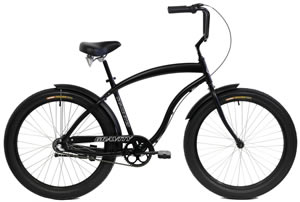 Cruiser Bikes:
Cruiser Bikes:
These are similar to that of hybrid bikes, which are designed for casual ridings. Like that of hybrid bikes, even these provide straight and comfortable posture while riding. Usually, these have wide "balloon" tires, and handlebars which are upright. Most cruiser bikes are single-speed or 3-speed with old-fashioned coaster brake. These are preferred for short distance commuting and errands.
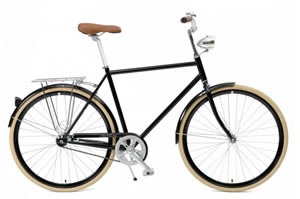 City Bikes:
City Bikes:
These are commuter or urban types of bikes. This bike has characteristics of both a hybrid and cruiser bike. Usually, these have an upright riding position but their wheel size resembles that of a hybrid bike. Commonly, these bikes are also called as ‘Dutch bikes’. A city bike might also have some or all of these features:
- Fenders
- Chain guard
- Skirt guard on rear wheel
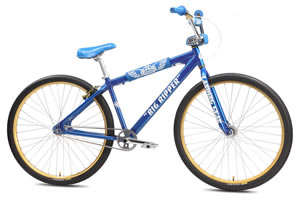
BMX Bikes:
These are popular small sized bikes or bicycles, which are famous among kids. These are used for performing various styles of trick and stunt riding.

Folding Bikes:
As their name suggests these bikes are traveling bikes, they can be carried along the boats, cars, bus and trains or other vehicles by folding the cycle and its components. Most folding bikes have smaller wheels, which make them a little less efficient and trickier to handle than standard bikes.

Recumbent Bikes:
These are available in two-wheel and three-wheel designs and structural types. These have a long and low design structures with full-size seat and backrest. These are difficult when used at the time of pedaling up towards the hills.

Tandem Bikes:
These are bicycles especially made for two people or riders. These are available in all types of styles, from cruiser tandems and hybrid tandems for the bike path or boardwalk, off-road mountain bike tandems, and high-performance road racing tandems.
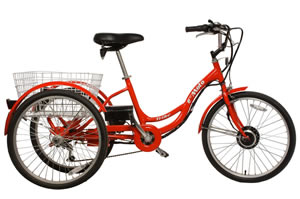
Adult Tricycles:
These are best for older folks, who want to practice cycling and gain power. These are popular among environmentally-conscious industrial/warehouse applications.
Image Courtesy: olearybuiltbicycles.com, trendhunter.com, bikesdirect.com, bikesdirect.com, criticalcycles.com, jensonusa.com, treehugger.com, mohsen-saleh.com, urkai.com, tricyclesforadults.net









Add new comment